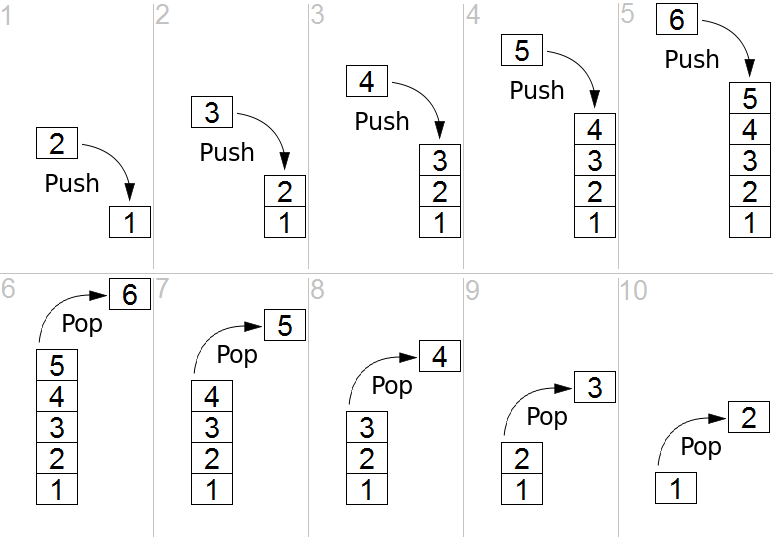| Safe Haskell | Safe |
|---|---|
| Language | Haskell2010 |
Data.Stack
Description
Stack data structure and associated operations
A stack is a basic data structure that can be logically thought as linear structure represented by a real physical stack or pile, a structure where insertion and deletion of items takes place at one end called top of the stack.
In other words, a Stack is an abstract data type that serves as a collection of elements, with two principal operations: stackPush, which adds an element to the collection, and stackPop, which removes the most recently added element that was not yet removed.

See also https://en.wikipedia.org/wiki/Stack_(abstract_data_type)
Documentation
Abstract Stack data type
stackPush :: Stack a -> a -> Stack a Source #
O(1). Push item onto Stack
(∀x)(∀s)(stackPop (stackPush s x) == Just (s,x))
stackPeek :: Stack a -> Maybe a Source #
O(1). Pop most recently added item without removing from the Stack
stackPeek stackNew == Nothing (∀x)(∀s)(stackPeek (stackPush s x) == Just x) (∀s)(stackPeek s == fmap snd (stackPop s))
stackPop :: Stack a -> Maybe (Stack a, a) Source #
O(1). Pop most recently added item from Stack
stackPop stackNew == Nothing (∀x)(∀s)(stackPop (stackPush s x) == Just (s,x))
stackIsEmpty :: Stack a -> Bool Source #
O(1). Test if stack is empty
stackIsEmpty stackNew == True (∀x)(∀s)(stackIsEmpty (stackPush s x) == True) (∀s)((stackSize s == 0) ⇔ (stackIsEmpty s == True))